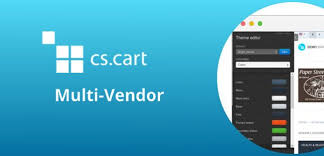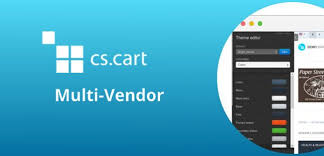Web development can be a daunting task for any programmer, but luckily there are tools that can help make the process easier. In this article, we will be discussing Symfony, an open source php mvc framework that makes web development simpler and faster than ever before. We’ll look at what Symfony is, how it works with the MVC pattern and how it can benefit you as a web developer.
Introduction to Symfony
The Model-View-Controller (MVC) architectural pattern has been around for a long time. It was first introduced in the late 1970s, and has been gaining popularity ever since. The MVC pattern is now used by many popular frameworks, such as Ruby on Rails, CakePHP, and Symfony.
The MVC pattern separates an application into three parts: the model, the view, and the controller. The model represents the data of the application. The view displays the data to the user. The controller handles user input and interacts with the model to update the view.
Symfony is a PHP web application framework that implements the MVC pattern. It is designed to simplify web development by providing a set of tools and components that can be used to quickly build robust web applications.
Symfony provides everything you need to get started with MVC development in PHP. It includes a powerful router component that allows you to map URLs to specific controllers and actions. It also includes multiple templating engines that make it easy to create views. And it comes with a set of utilities and libraries that can be used to perform common tasks, such as form validation or database access.
What is the MVC Pattern?
The MVC pattern is a software design pattern that separates the data model, presentation, and control logic of an application. The Model represents the data, the View displays the data, and the Controller handles user input and updates the Model. This separation allows for easier maintenance and development of an application. The MVC pattern is often used in web applications, where the View is a web page and the Controller is a web server.
Symfony is a PHP web framework that implements the MVC pattern. Symfony simplifies web development by providing tools to help with routing, templating, form validation, and more.
Components in Symfony
Symfony is a PHP web application framework that implements the MVC (Model-View-Controller) architectural pattern. It has been released under the MIT license since 2005. The latest stable version is 4.4, which was released on 2019-01-22.
The Symfony framework consists of several components. The most important ones are:
HttpKernel – This component provides a structured process for handling HTTP requests and responses. It also converts incoming requests into vanilla PHP objects (called Request objects) and passes them to the appropriate controller. Similarly, it converts the output from controllers (usually in the form of Response objects) into HTTP responses.
Routing – This component is responsible for matching incoming HTTP requests with the appropriate controller action. For example, if a user visits /about in their browser, the Routing component will map this request to the AboutController::index() method and execute it.
Templating – This component provides tools for rendering HTML templates and other content types (e.g. XML, JSON). In most cases, you’ll use Twig – a popular templating engine – to generate HTML markup from your templates.
Forms – This powerful component lets you easily create and process HTML forms in your application. It takes care of all the tedious details such as validating input data, displaying error messages, etc.
Translation – This component provides tools for internationalising your applications – i.e., translating
Benefits of using Symfony with MVC Pattern
The Model-View-Controller (MVC) is a software design pattern that is widely used in web development. It separates the application logic from the user interface, making it easier to develop and maintain large web applications.
Symfony is a PHP web application framework that implements the MVC pattern. It provides a number of benefits over other frameworks :
1. Symfony is designed to be scalable and extensible. This makes it ideal for developing large-scale applications with complex requirements.
2. Symfony includes a number of tools and libraries that make development faster and easier. For example, the Symfony Debug Component can help you debug your code more efficiently.
3. Symfony follows the ” Convention over Configuration ” principle, which means that it comes with a set of default conventions that make development simpler and faster. However, if you need to deviate from these conventions, you can easily configure Symfony to meet your needs.
4. Symfony has excellent documentation, which makes it easy to get started with and learn how to use the framework effectively.
Some popular applications that have been built using the Symfony framework and the MVC pattern include
Drupal 8
Laravel
Magento 2
phpBB
Sylius
FAQs
Q. What is Symfony framework?
Symfony is an open-source PHP web development framework, designed to streamline the development process. It provides developers with a set of tools that help them create and maintain web applications quickly and efficiently. With Symfony, developers can create complex websites without having to write code from scratch. And best of all, it’s supported by Google!
Q. What are the benefits of Symfony framework?
Symfony is a great choice for developers because it offers scalability and reliability, allowing developers to quickly build robust and secure applications. The Symfony framework also provides developers with tools such as the powerful composer-based dependency manager, which increases productivity. Moreover, its modular design allows developers to easily customize and extend existing functionality. Furthermore, Symfony has an active community of users who are constantly working on improving the framework and contributing to its development.
Q. What are the components in Symfony?
Symfony is a powerful open-source web application framework that enables developers to create complex applications in an easy and fast way. It consists of a set of reusable components, such as the HTTPKernel, Routing, Serializer, Templating and many more. These components are all written in PHP and come with a wide range of features that make them very flexible and powerful. Additionally, Symfony provides its own Dependency Injection component which allows for easy integration with other libraries and frameworks.
Q. Does Laravel use Symfony?
Yes, the Laravel framework is built on the foundation of Symfony components. This allows developers to enjoy the same powerful features of Symfony when developing with Laravel. With Laravel, you can create reliable and secure applications faster, since some of the heavy lifting has already been done for you by Symfony’s components.
Q. What are the server requirements to install the Symfony?
The server requirements for Symfony are relatively straightforward and include a web server, PHP 7.2+ and MySQL or PostgreSQL database. Additionally, you will need to have the following configured on your server: Apache or nginx, mod_php or php-fpm, and a valid SSL certificate. Beyond just the technical requirements, it is also recommended that you have basic experience with the Linux command line and web servers.



